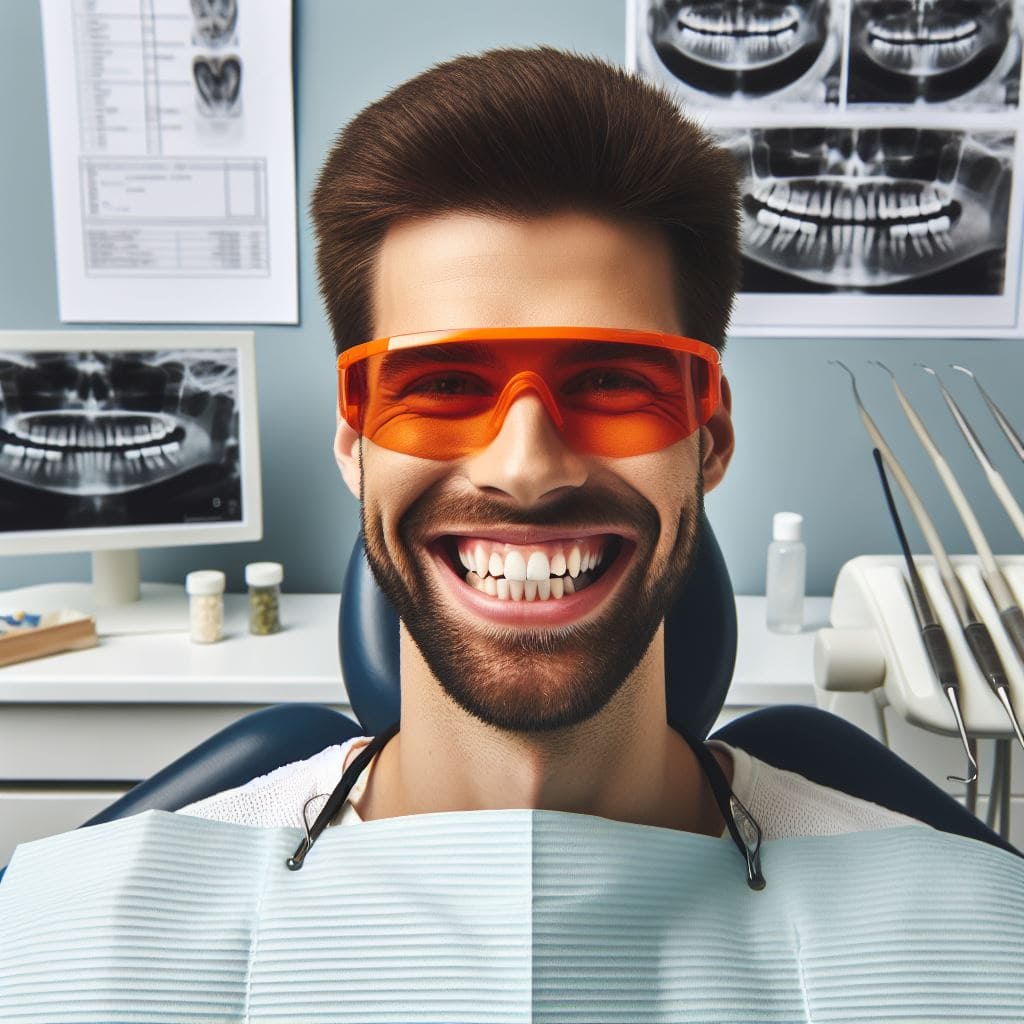Discovering a misaligned bite, scientifically termed malocclusion, is like finding a hidden adversary affecting both the elegance of your smile and the efficiency of your teeth.
The term ‘Crossbite’ is usually used for a prevalent form of malocclusion where the upper and lower teeth engage in a disharmonious sequence.
This occurs when the upper teeth infiltrate the lower ones when you bite down, creating a misalignment that transcends mere aesthetics.
The repercussions of a crossbite extend beyond the surface, influencing not just your appearance but also your oral health and functionality.
This may lead to certain repurcussions:
Tooth decay and gum disease become ominous threats, as plaque and bacteria revel in the spaces between the teeth.
Tooth wear and damage play their part, orchestrating uneven pressure and friction, resulting in a toll on your precious enamel.
Jaw pain and headaches enter the scene, triggered by the stress and strain inflicted upon the jaw muscles and joints.
Speech difficulties make an unexpected appearance, a consequence of interference with the tongue and lips.
Facial asymmetry becomes a silent sculptor, subtly altering the growth and development of the jaw and face.
Lets embark on a journey into the intricacies of crossbites—unveiling their origin, exploring preventive measures, and dissecting the effectiveness of clear aligners as the beacon of a transformative solution.
Table of Contents
ToggleUnderstanding Crossbite

In the intricate realm of dental anatomy, crossbites emerge as a significant manifestation of misalignment, characterized by the upper teeth occupying an anomalous position inside the lower teeth, whether anteriorly or posteriorly.
This deviation from dental equilibrium can manifest in various forms—a singular tooth challenging its counterpart’s alignment or a synchronized misalignment involving multiple teeth.
Let us dissect the intricacies of crossbites, systematically categorized into two primary types:
Anterior Crossbite
In the realm of frontal dentition, an anterior crossbite orchestrates misalignment.
Here, the upper front teeth discreetly position themselves behind the lower front teeth during the closure of the jaw.
This nuanced misalignment not only transforms the aesthetic presentation of one’s smile but may also contribute to concerns such as tooth wear and speech impediments.
Posterior Crossbite
A posterior crossbite primarily influences the alignment of molars. In this scenario, the upper molars venture inside their lower counterparts.
This intricacy not only impacts bite stability but may also culminate in uneven tooth wear over time.
Causes of Crossbite

Dental alignment often encounters the enigmatic presence of crossbites, a condition shaped by the interplay of genetic predispositions and environmental variables.
Delving into the causative factors reveals a compelling narrative:
Genetics: At the very core of crossbite development lies the influence of genetics. Inherited factors wield their impact, contributing to misalignments in both the jaw and teeth, culminating in the manifestation of crossbites.
Abnormal Jaw Development: The symmetrical growth of the upper and lower jaw plays a pivotal role in dental alignment. Anomalies in this developmental process can pave the way for crossbites, as irregularities in jaw growth disrupt the harmonious alignment of teeth.
Tooth Crowding: Insufficient spatial accommodation for teeth to thrive can be a harbinger of misalignments, including crossbites. Tooth crowding sets the stage for a complex interplay where the teeth, in their quest for space, may adopt positions leading to crossbite formations.
Childhood Habits: The canvas of crossbite origins broadens further with the influence of childhood habits. Prolonged practices such as thumb sucking and pacifier use, if not addressed, can exert a subtle yet profound impact on dental alignment, contributing to the emergence of crossbites.
The exploration of crossbite unfolds a narrative that goes beyond mere misalignment—it becomes a testament to the intricate interplay of factors shaping dental destinies.
Understanding these influences equips us with insights to navigate and address the multifaceted origins of crossbites with precision and foresight.
Prevention of Crossbite

While genetic factors exert their influence beyond our control, the trajectory of crossbite development can be significantly influenced by strategic preventive measures and timely interventions, particularly in the realm of pediatric dentistry.
Here’s the orchestration of proactive strategies:
- Early Orthodontic Assessment: Initiate regular dental check-ups from an early age to detect and address potential alignment issues, laying the groundwork for optimal dental development.
- Intervention for Habits: Address childhood habits such as thumb sucking or tongue thrusting early on, redirecting these behaviors to prevent the development of crossbites.
- Timely Orthodontic Treatment: If needed, implement orthodontic interventions at the right time to guide proper jaw and tooth development, ensuring seamless dental alignment.
Clear Aligners: A Modern Solution for Crossbite

In the realm of orthodontic solutions, braces have long held sway as the go-to method for rectifying crossbites.
Here’s why this evolution is capturing the spotlight:
However, a transformative wave of technological advancements has ushered in a compelling alternative – clear aligners, with Clearpath aligners at the forefront.
| Why Clear Aligners might be the best solution to treat a Crossbite |
Aesthetics: Clear aligners, exemplified by Clearpath, offer virtually invisible correction, providing a discreet orthodontic option without the conspicuous appearance of traditional braces. Comfort: Crafted with precision, clear aligners ensure a bespoke, comfortable fit over your teeth, surpassing the discomfort often associated with traditional braces’ wires and brackets. Removability: Clear aligners, unlike braces, are removable, facilitating easy maintenance of oral hygiene and offering the flexibility to enjoy meals without restrictions. |
In this era of orthodontic evolution, clear aligners emerge not just as a correction method but as a symbol of aesthetic refinement, comfort, and flexibility.
The journey to a harmonious smile has taken a leap into the future, where innovation meets the needs of individuals seeking discreet and convenient orthodontic solutions.
Depending on your individual How can clear aligners correct crossbite?
Embarking on the journey to correct a crossbite, clear aligners emerge as the epitome of precision, orchestrating a symphony of movements to guide your teeth into a harmonious alignment.
Here’s the artistry behind the scenes:
Tailored Movements and Attachments: Clear aligners tailor movements and attachments for optimal results, whether addressing a posterior crossbite demanding expansion or an anterior crossbite necessitating strategic repositioning.
Posterior Crossbite Correction: In a posterior crossbite, clear aligners delicately widen the palate, creating space for a seamless alignment with expansion screws or buttons.
Anterior Crossbite Transformation: For an anterior crossbite, aligners, complemented by elastics or hooks, strategically guide teeth forward and backward, sculpting a balanced alignment.
Single Tooth Precision: In cases of a solitary tooth misalignment, clear aligners achieve rotation or tilting with attachments or ridges, providing necessary grip for a harmonious fit.
Beyond Aesthetics: Clear aligners enhance bite functionality, guarding against jaw pain and headaches while elevating appearance and confidence. The transparent journey unfolds, aligners guiding teeth closer, a testament to precision and progress.
“The effectiveness of the early orthodontic correction of functional unilateral posterior crossbites” is a systematic review and meta-analysis aimed to critically appraise the available evidence of the effectiveness of early intervention of functional unilateral posterior crossbites (FPXB) between the ages of 6 and 12 years.
The Effectiveness of Clear Aligners in Correcting Crossbites
Clear aligners have many benefits over other methods of correcting crossbite, such as:
Elevated Appearance: Clear aligners transform your smile by closing gaps, straightening crooked teeth, and aligning uneven smiles, fostering attractiveness and confidence.
Optimized Oral Health: Acting as oral health guardians, clear aligners combat crossbite-related issues—plaque buildup, tooth decay, gum disease, and bad breath. Simultaneously, they enhance bite function, preventing jaw pain and headaches.
Unparalleled Comfort and Convenience: Clear aligners offer comfort by allowing removal as needed, sparing you from the discomfort of metal braces. Say goodbye to cuts and allergic reactions. Plus, fewer visits to the dentist or orthodontist save time and money.
Studies validate the efficacy of clear aligners in correcting malocclusions, including crossbites and recent evidence underscores the reliability and effectiveness of this contemporary orthodontic solution.
A study by Jiayu Zhang, Yuzhi Yang, Xue Han, Tingting Lan, Fei Bi, Xiangchen Qiao & Weihua Guo demonstrated that a new clear removable appliance was able to correct early-stage anterior crossbite in a safe, comfortable, convenient, and efficient way.
Ready to transform your smile?
Don’t let crossbite cast a shadow on your smile and confidence. Seize the opportunity to embark on the path toward a confident and perfectly aligned smile with the expertise of ClearPath Ortho.
Take the first step toward a revitalized, healthier smile—because you deserve to smile with pride and joy. Your transformative journey awaits!
Fill out the contact form below and get started with your clear aligner journey today.











